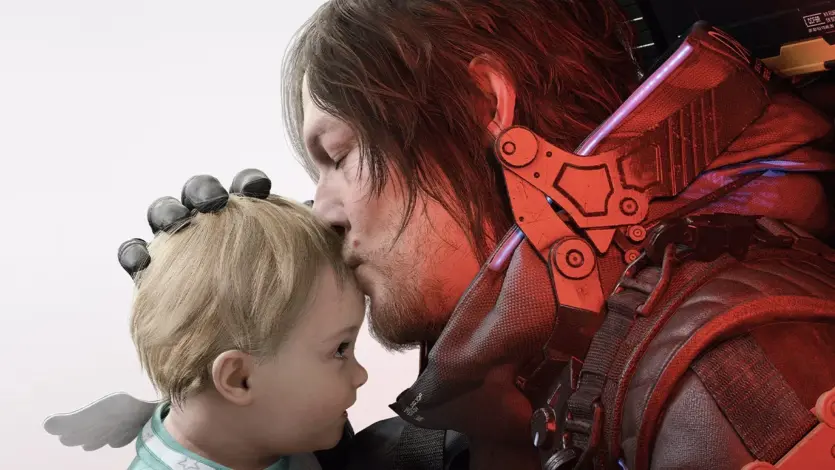
In 2019, Death Stranding by Kojima Productions literally divided the Internet into two halves. Some people saw the game as an outstanding contribution to the formation of video games as an art form. Others saw it only as a «courier simulator». So, with Death Stranding 2: On the Beach, did Kojima’s team manage to overcome this split and finally create a game that can be put on the same shelf as the iconic Metal Gear? Let’s find out.
Content
- 1 What was that, Mr. Kojima?
- 2 Gaming postmodernism
- 3 Plot, atmosphere, and visual style
- 4 Death Stranding 2: On the Beach gameplay guide
- 5 Social stranding in Death Stranding 2: On the Beach
- 6 Combat system Death Stranding 2: On the Beach
- 7 Death Stranding 2: On the Beach graphics
- 8 Form prevails over content
What was that, Mr. Kojima?
Writing a review of Death Stranding 2: on the Beach was much harder for me than explaining to my grandmother what quad robs are. Well, because how can you evaluate a game that deliberately turns the tables and, often, brazenly mocks the standard approach to video game development and designEverything (or almost everything) that is bad about the game from the point of view of an average gamer or a burned-out game designer was added to Death Stranding 2 on purpose.
Kojima-san doesn’t just turn the usual expectations of players upside down — he seems to be deliberately annoying us, because he is convinced that this torment is worth the final experience. And the most frustrating thing about it is that he’s so damn right.Why am I offended? As a pragmatic person, I hate narcissistic artists who put their own vision above the banal respect for players who spend their own money to buy a game. But both Death Stranding and Death Stranding 2: on the Beach are damn well worth it. At least for me
Nevertheless, stealing a page from the playbook of the maestro Kojima himself, I think it is necessary to state the obvious. Although the game, in my humble opinion, deserves success and recognition, I am not you. If you’ve played Death Stranding and didn’t like it — don’t expect miracles from Death Stranding 2. But if you, like me, skipped the first part just because it’s «courier simulator» — give the sequel a chance.
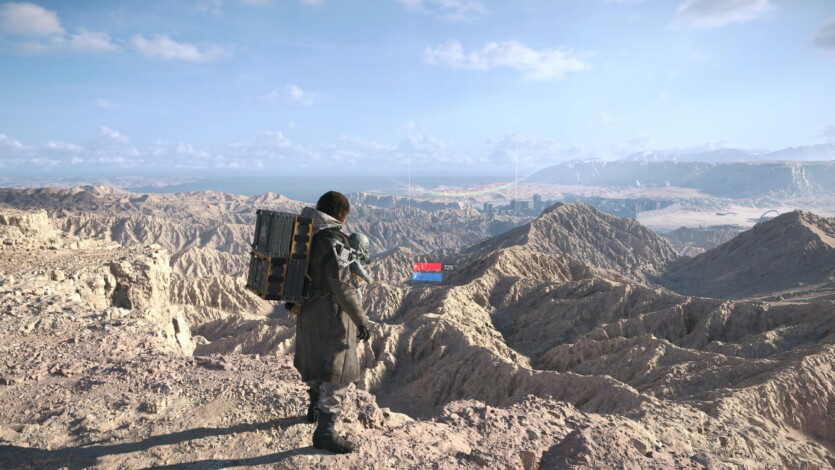

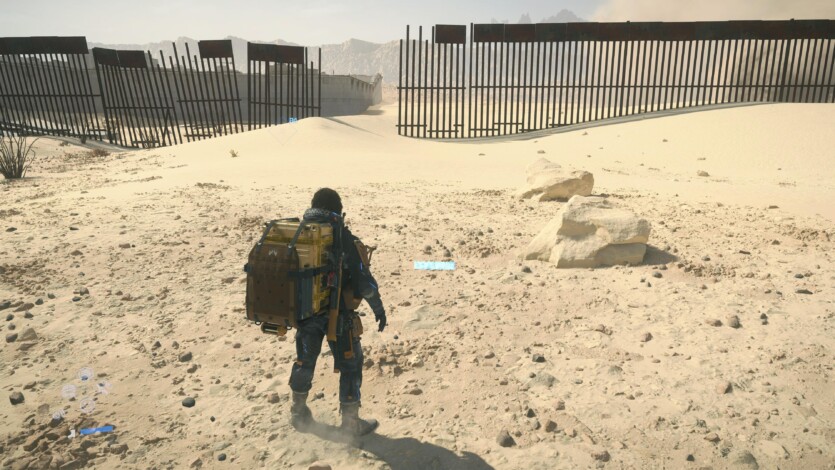
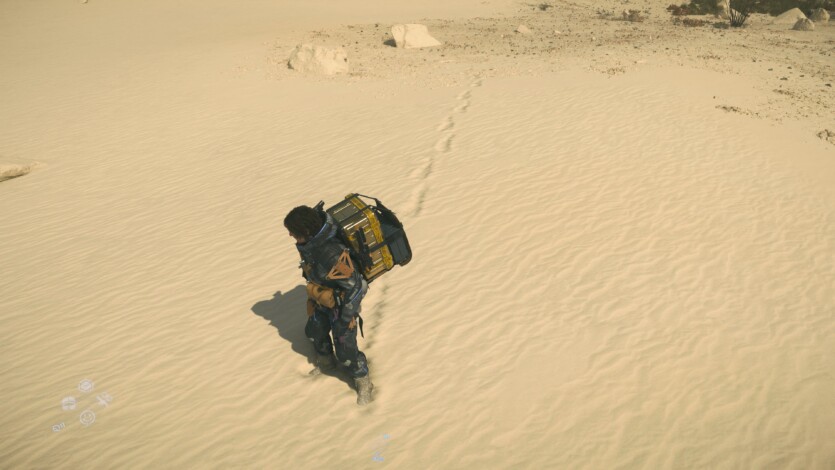
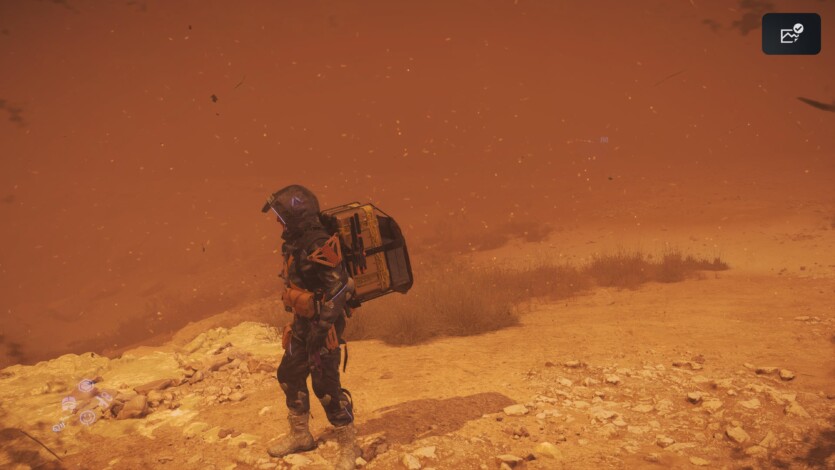
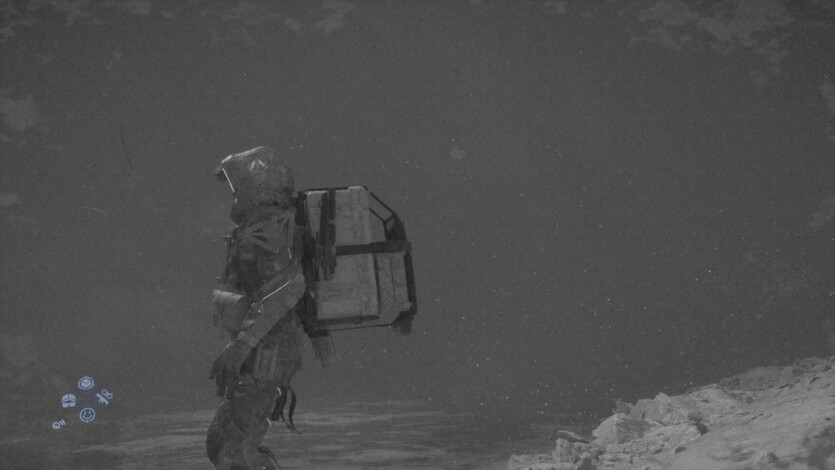
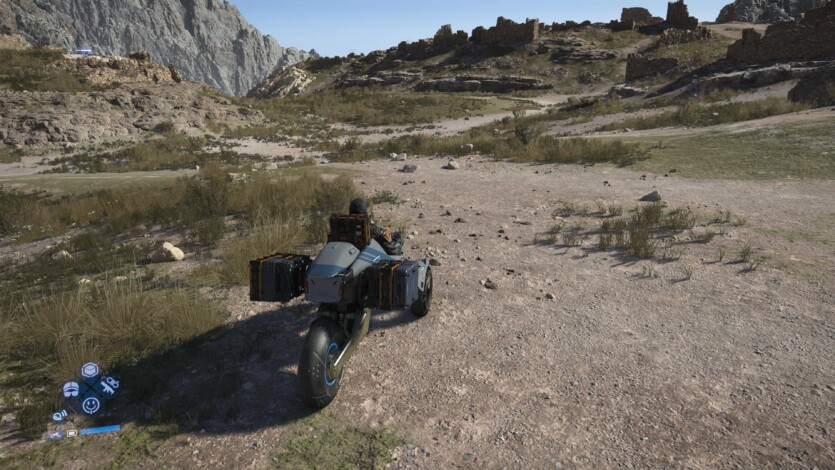

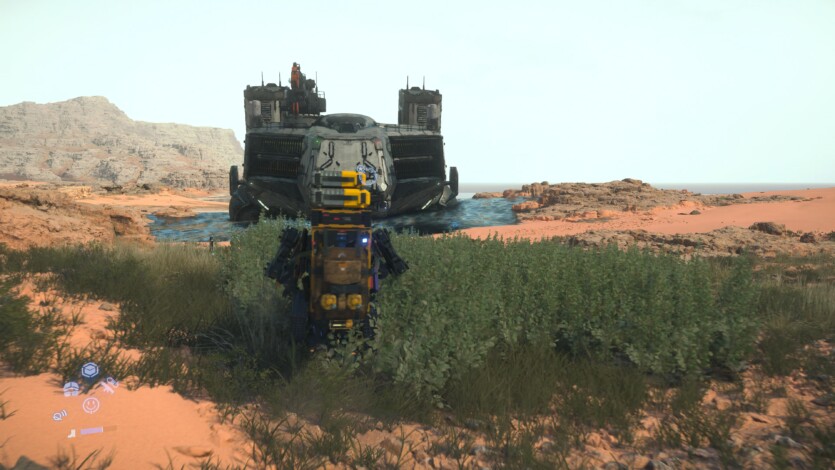
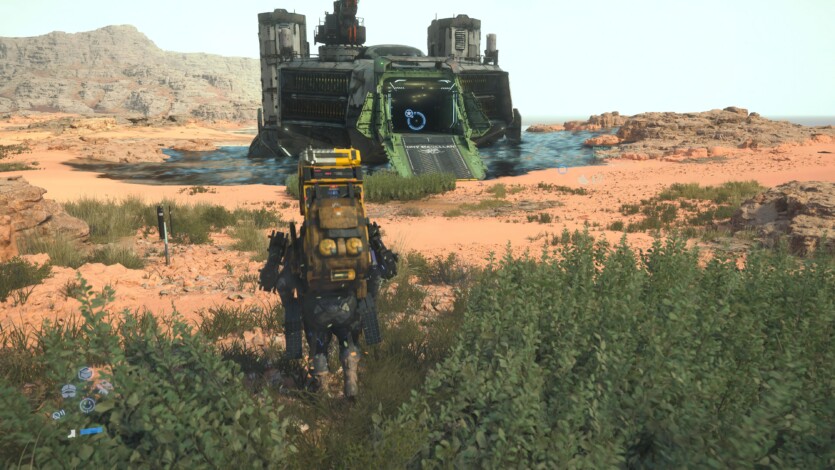
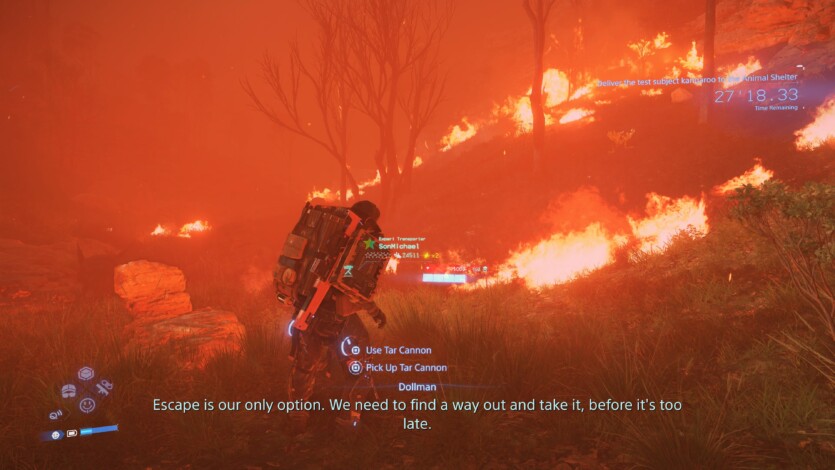
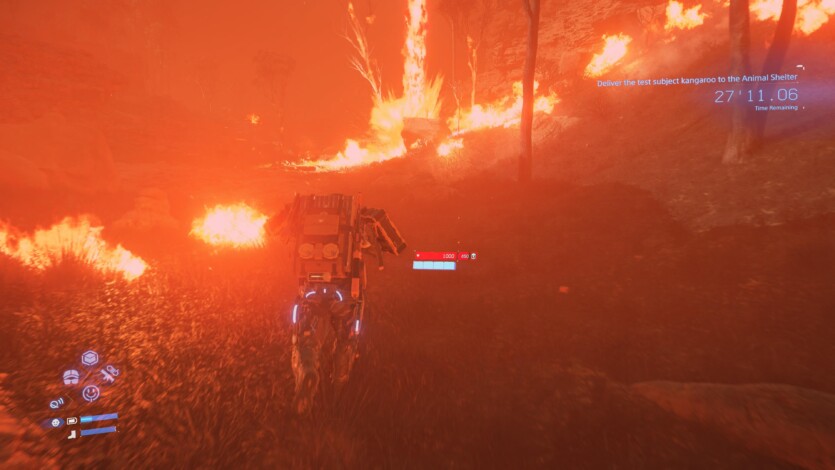
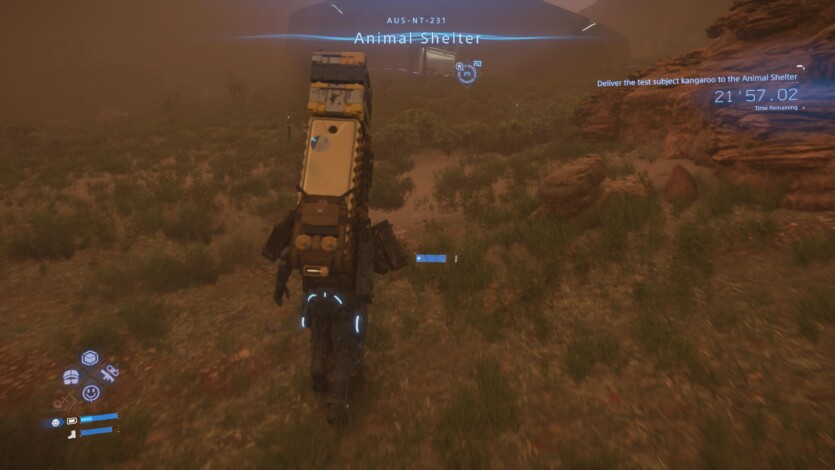
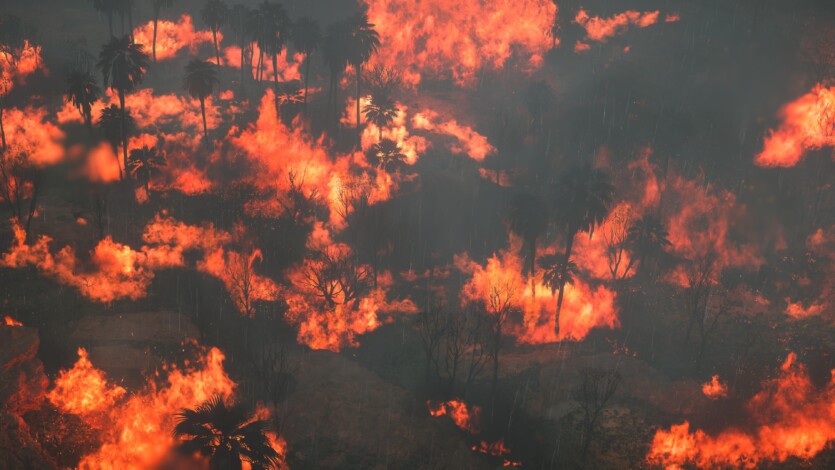
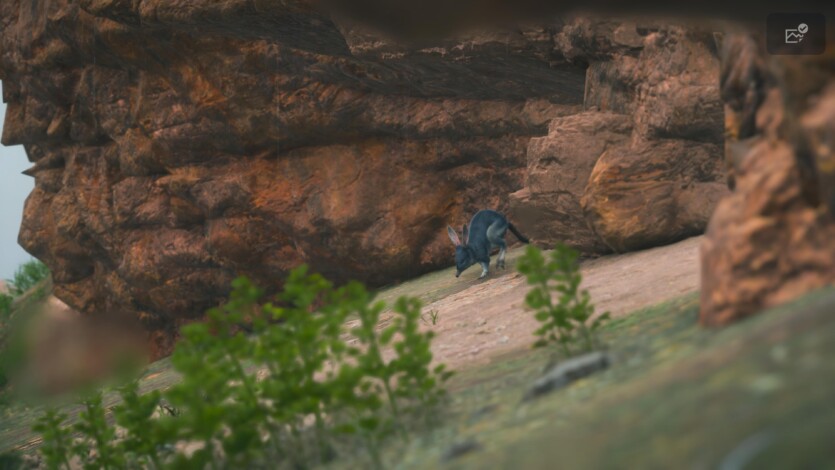
Gaming postmodernism
Once upon a time, there was a boy band called The Beatles. The guys sang sweet, kind songs about love, holding hands, dancing, submarines, and «LSD». This type of art, which was completely unorthodox at the time, but generally positive, full of hope and a vision of a bright future, can be called modernism.
However, with the passage of time, financial crises, and after several hot and one cold wars, humanity was forced to take off its rose-colored glasses. There was simply not enough positive attitude and inspiration to create the perfect «tomorrow», when in fact even «today» was in question. People were forced to look for meanings not outside in traditions, beliefs, and institutions that had failed them, but within themselves. That’s how postmodernism was born, the goal of which was not to find answers, but to ask questions.
If the standard, albeit sometimes template and safe, tools of a game designer aimed at creating a holistic, pleasant, and generally entertaining work of art can be considered The Beatles, then Kojima’s works are Gangsta’s Paradise.
From the very beginning of his career, the self-styled forefather of the stealth genre used the techniques of hyperrealism, breaking ludonarrative and deconstructing both the real and their game worlds

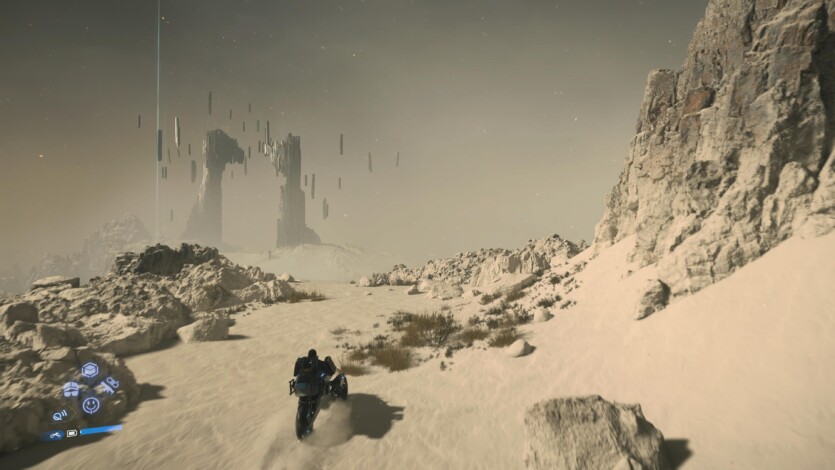
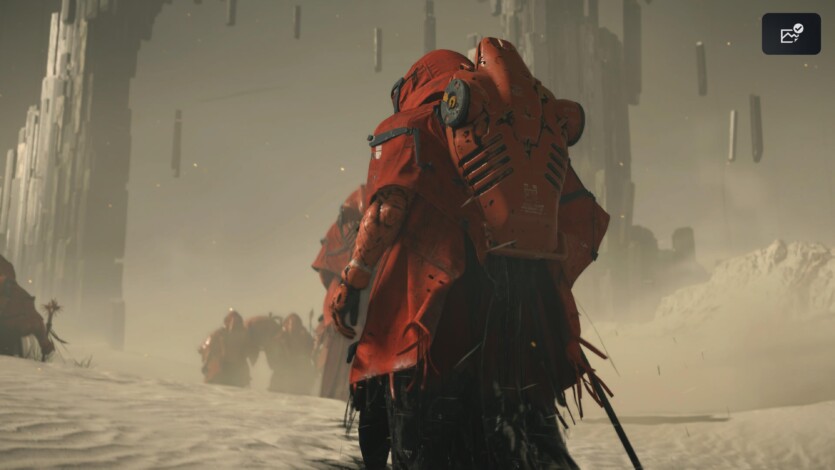
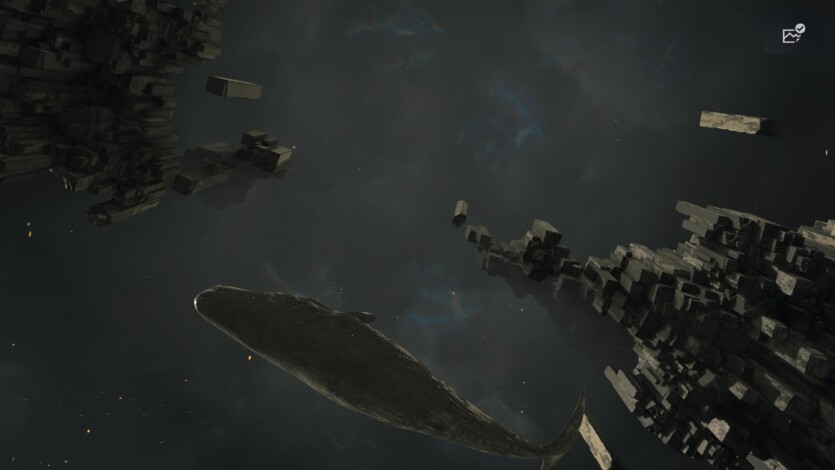
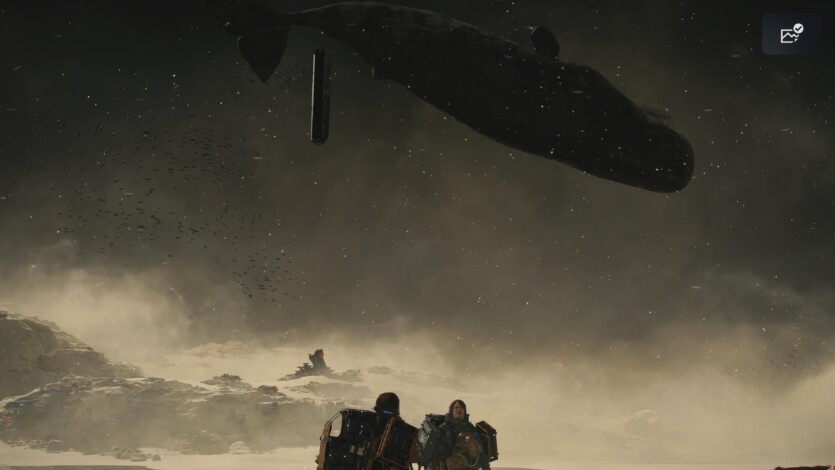
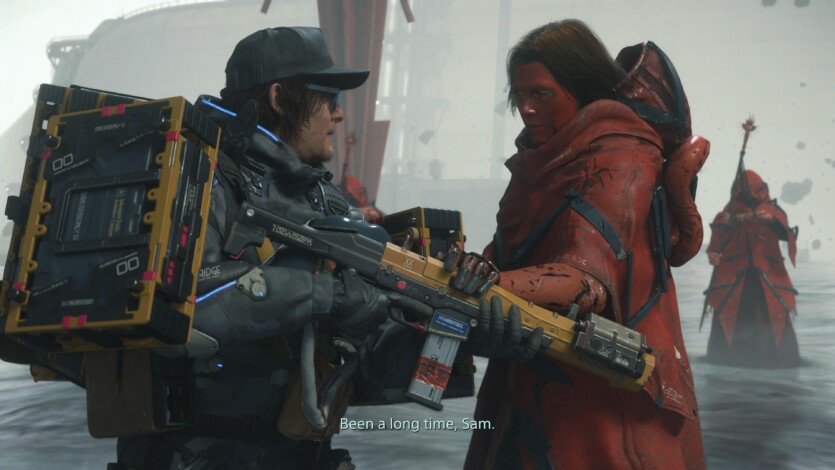

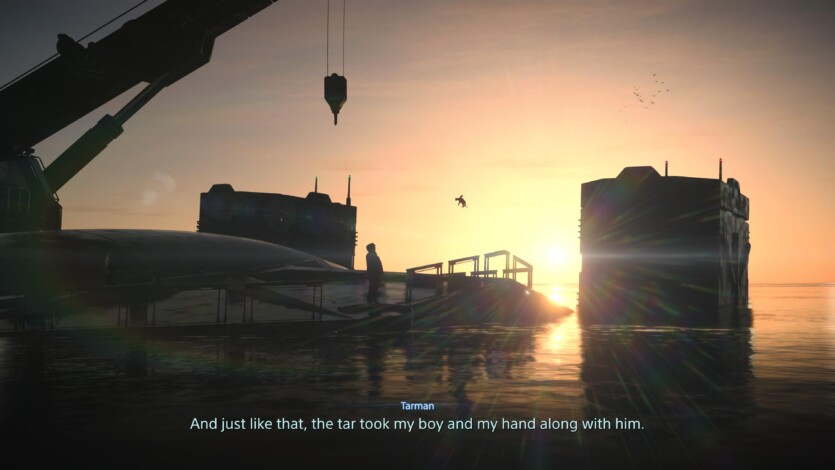
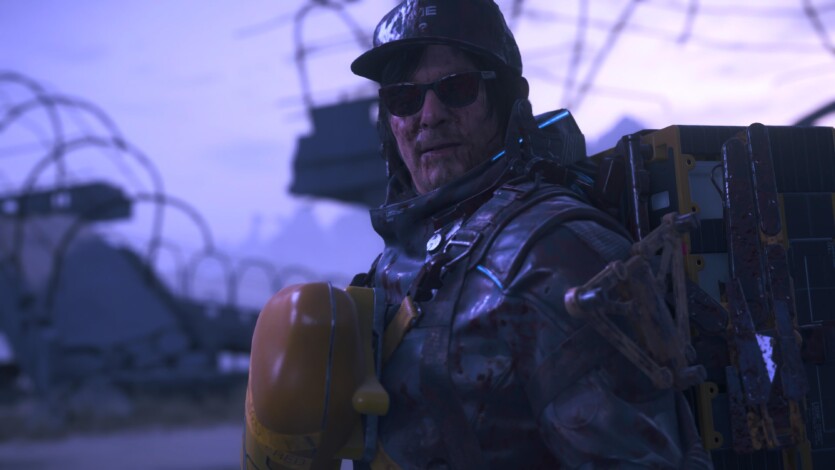


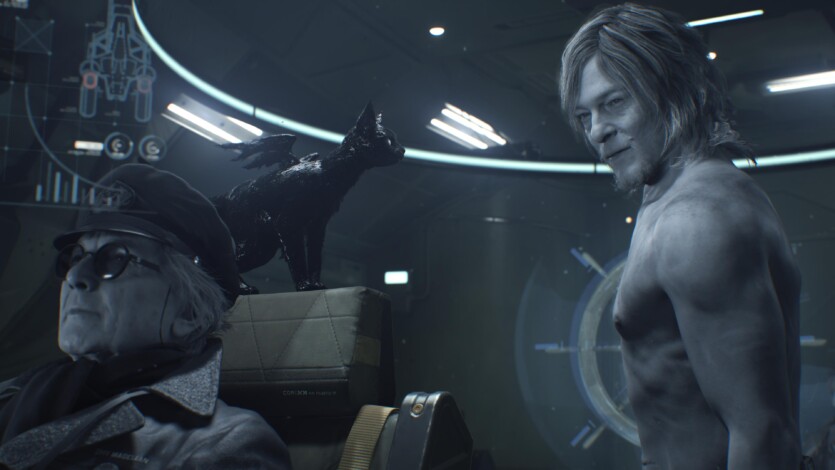

Snatcher and Policenauts unapologetically used the ideas of «Evangelion», «Blade Runner», and «Terminator». At the same time, they tackle topics that were difficult for the children’s medium of video games at the time: Is humanity capable of conquering space? Or is it one of the tasks that even our perseverance and ingenuity cannot cope with?
The Metal Gear series literally threw the concept of the importance of ludonarrative out the window, and Kojima himself openly ridiculed otaku and even the most ardent Solid Snake fans. I’m not even talking about Psychomancer’s unprecedented breaking of the fourth wall (and, seemingly, the console itself)
And Death Stranding and, subsequently, Death Stranding 2: On the Beach are the enchanting culmination and well-deserved catharsis of Hideo Kojima’s creative career.
Plot, atmosphere, and visual style
Usually, such things as plot, atmosphere, and visual style of a game should be separated into separate sections. Death Stranding 2 is not that case. Here’s an excerpt from an old interview with Kojima that perfectly illustrates why these things are inseparable in our case.
«Even now, while we’re talking, my mind starts to wander if I don’t concentrate,» he says with a warm smile. He points to the untouched cappuccino on the table in front of him: «take this coffee cup, for example».
«Okay. What is the history of this cup?», — I ask.
«I imagine a story in which there is a giant coffee cup and we are all sitting inside it right now. Although, perhaps, this is not really a story — more like a vivid picture. But it’s like this! That’s how my mind works»
Hideo Kojima: an outcast from the world of video games — Interview, Part 1», Simon Parkin, May 23, 2012
Kojima Productions has created a harsh, magical, thrilling, and most importantly stylish world based on only one component — it has to be a bright and unforgettable picture and damn everything that happens next to it

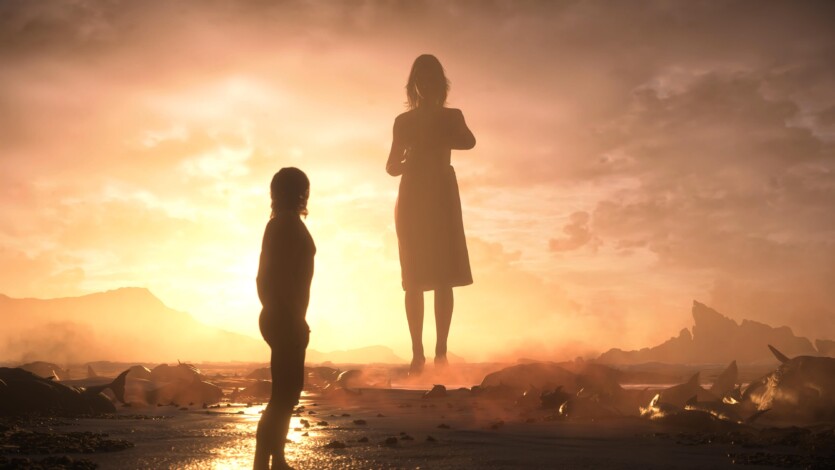
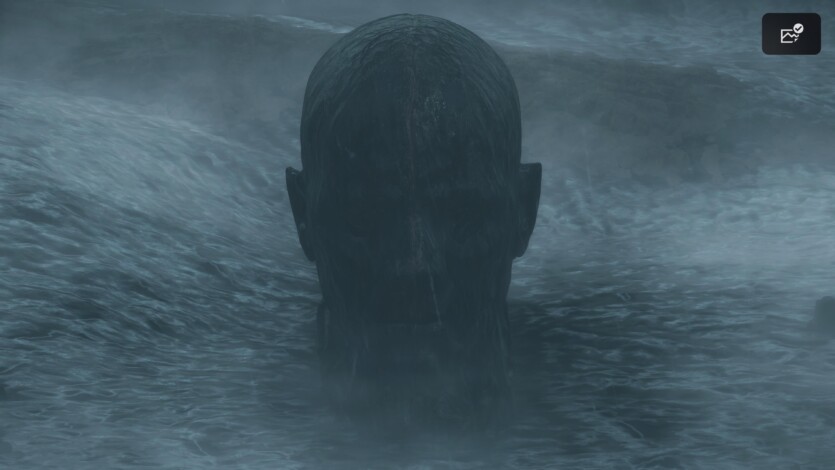
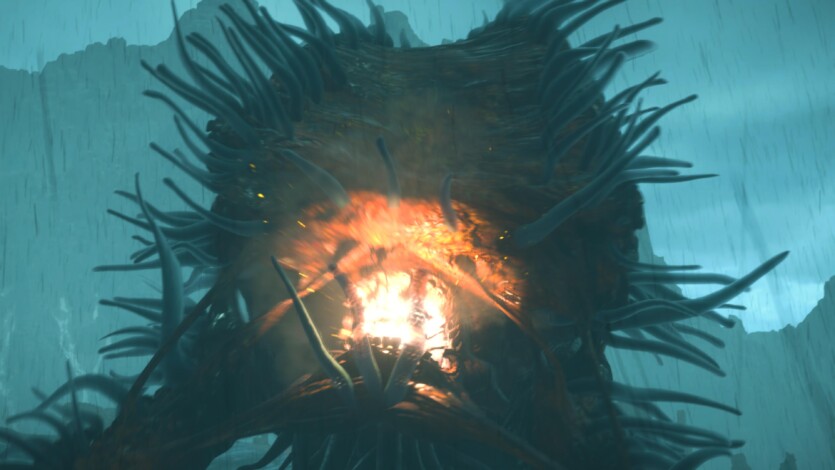
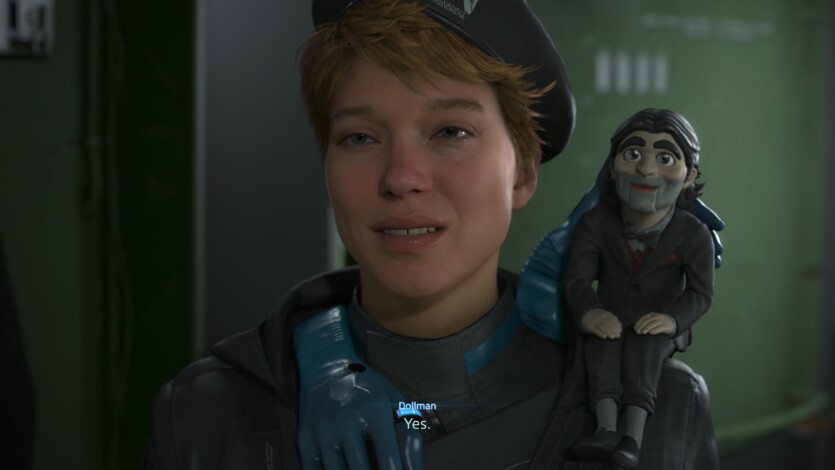
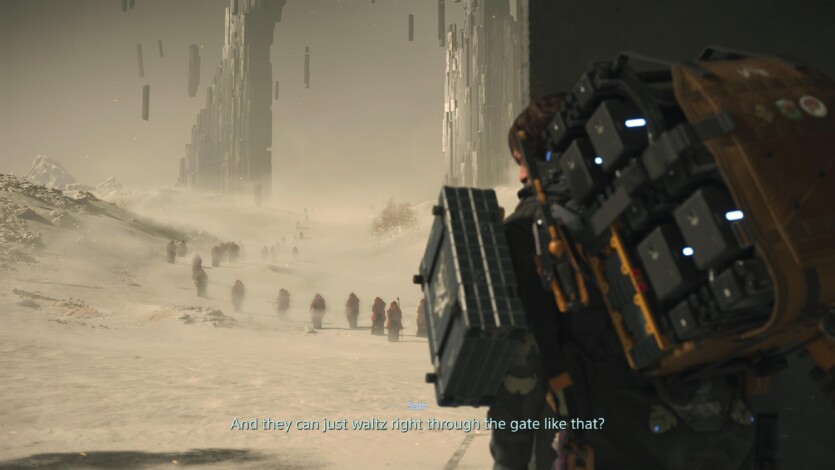
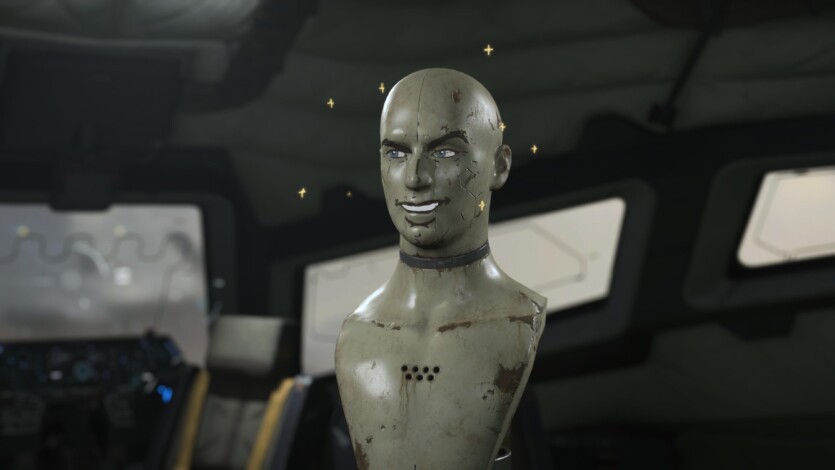
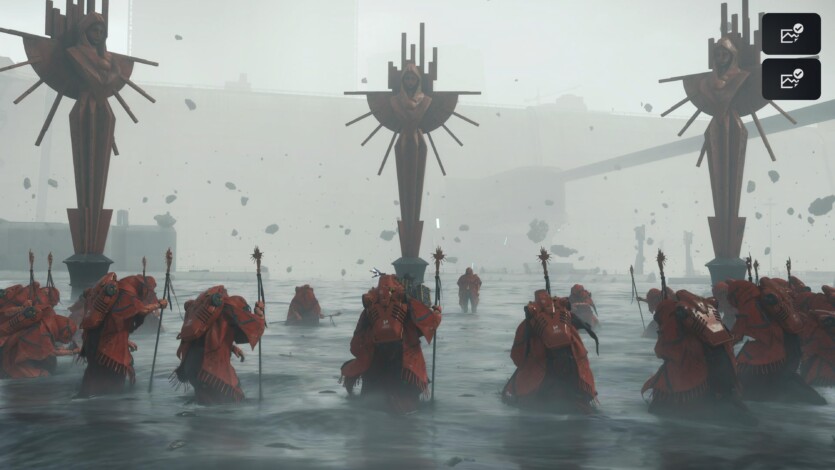
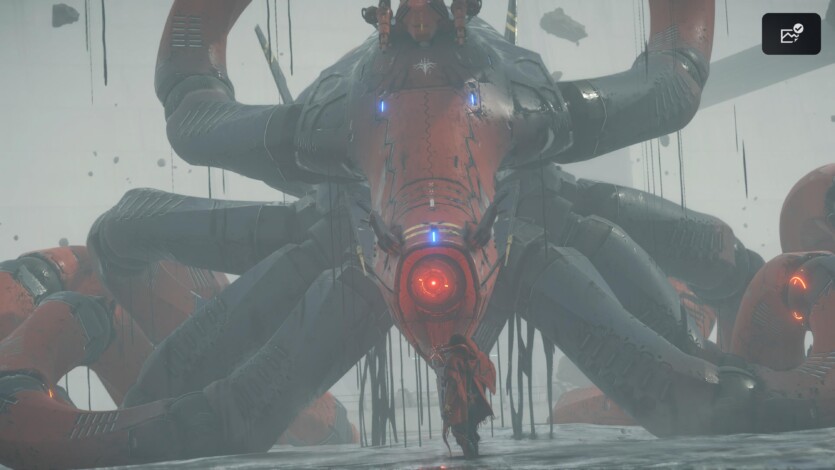
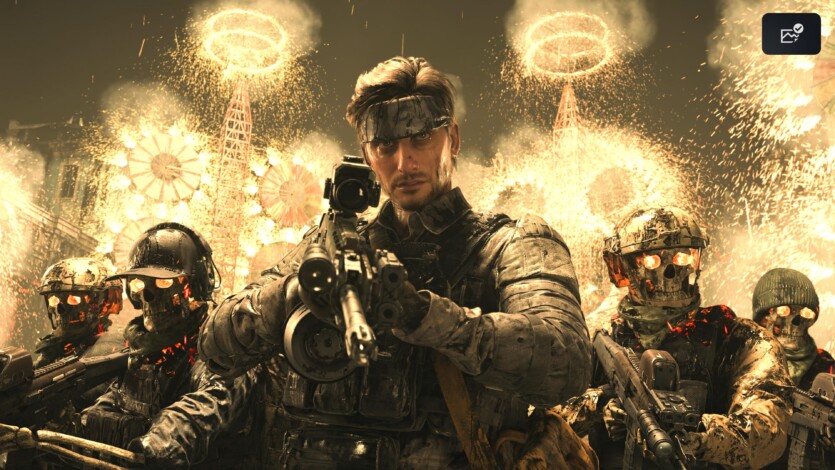
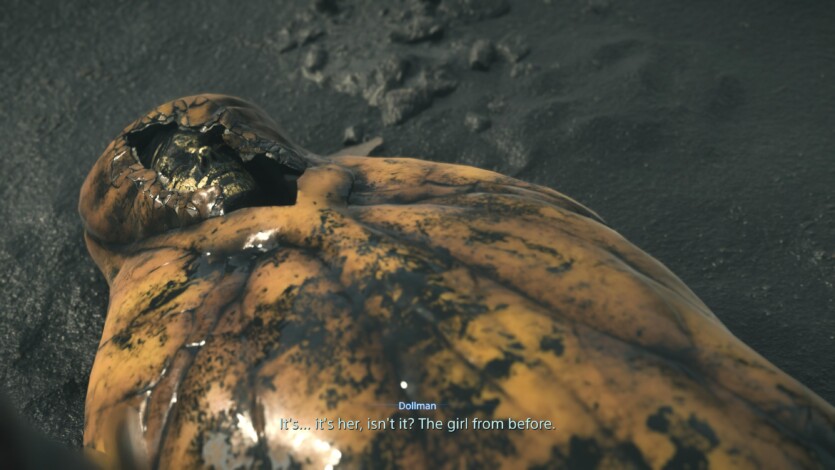
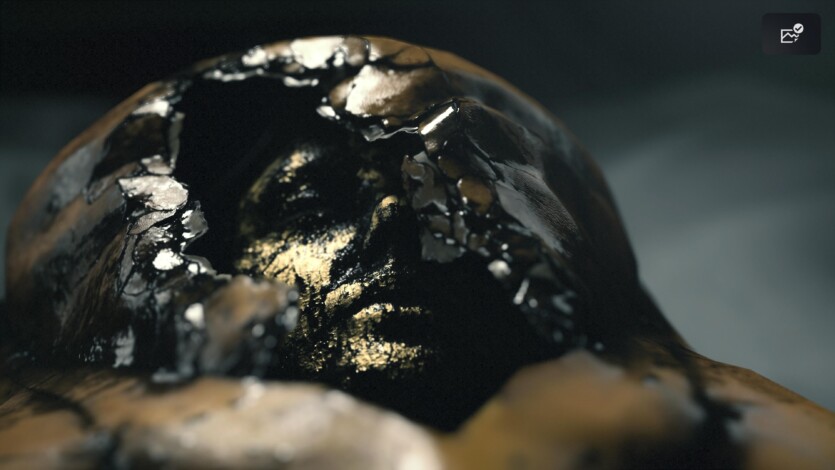
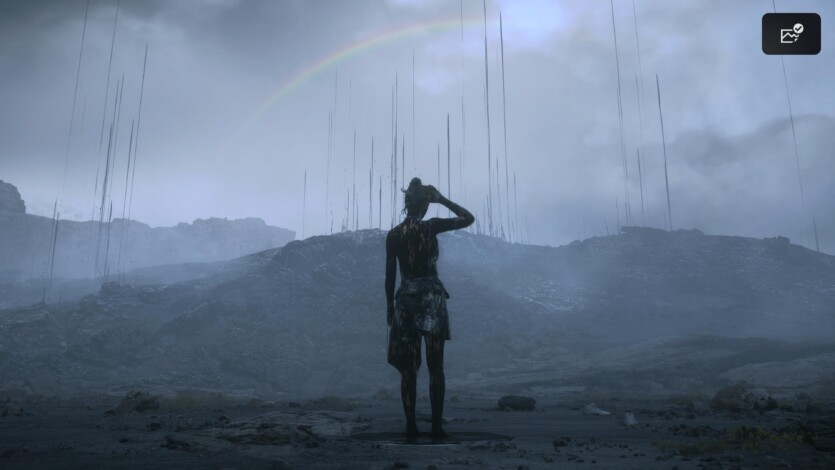
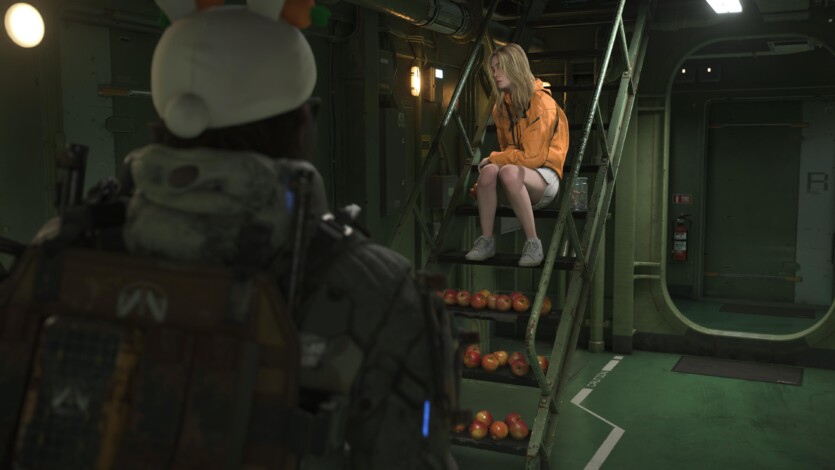
Of course, the plot of Death Stranding 2 is quite formulaic, the characters are cardboard, instead of dialogues we are offered monotonous exposition that is repeated at least three times, plot twists are visible from miles away, like lightning in an open field, and the actions of the characters often have no sense or logic.
Here are just a few examples of the most memorable dialogues:
Sam: Won’t the expansion of the chiral network be a trivial grab for new territory for the United Cities of America?
The President: Don’t worry, Sam. The government no longer controls the network. We are a private company.
Sam: Oh, okay, then.
I: WAT?
And one more.
Sam: I don’t know who you are. Why should I trust a mannequin with no face?
A mannequin: Okay, what if I create a hologram of a face you trust?
Sam: Oh, okay, then.
I: WAT?
And you know what? The game is full of this nonsense with a completely straight face, as if it should beAnd in combination with the mystical and incomprehensible visual style, these dialogues really work. It seems that the whole game is built on a strange the logic of dreams. Events happen because they happen only because those areas of the brain responsible for logic and sequencing are less active during the REM phase of sleep.
This is the main highlight of Death Stranding 2. You will enjoy the dizzying play of contrasts and think — constantly think — what the hell is going on.
Eventually, you will come to the question «What am I doing here?» and, in fact, the answer to this question is something intangible and intimate that hooks you and makes you play the game of «carrying a load from here to there» to the end.
Death Stranding 2: On the Beach gameplay guide
Death Stranding 2: On the Beach clearly follows the path of the original. This journey, like Sam and Lou’s first pilgrimage, is primarily based on overcoming a tough and confusing world. Of course, the game has expanded combat mechanics and stealth a bit, but these elements are auxiliary and do not play an important role in the gameplay loop.
A courier simulator? Perhaps. We are used to this type of content being reserved for side activities whose main purpose is to waste the player’s time. But each new route is an open task with many answers. Walking, driving, riding a snowboard coffin, or even launching yourself from a cannon is much more interesting than, for example, alternately pressing the right and left triggers in the main missions of Red Dead Redemption 2.
And more Kojima again turns the game norms upside down because the most interesting deliveries in Death Stranding 2 are hidden behind the secondary missions. Just think of delivering a pizza through a crowded B.T. field, traveling through a viscous tar lake where a giant whale is hiding, or a stunning race in the sky with «headless riders» on motorcycles.
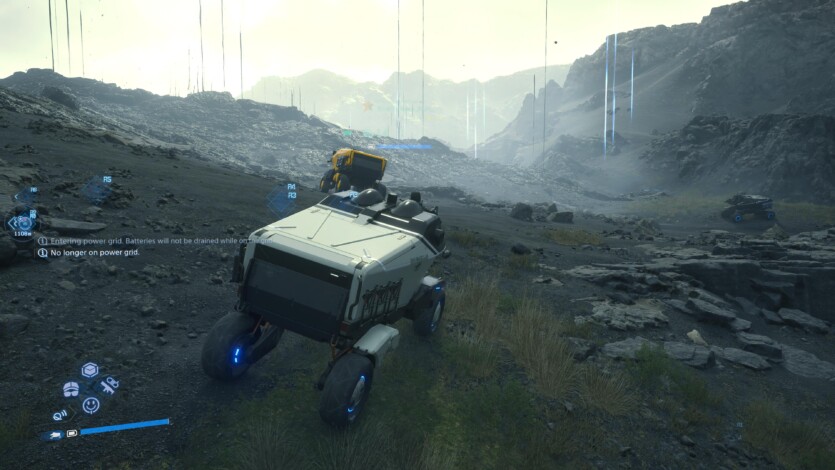
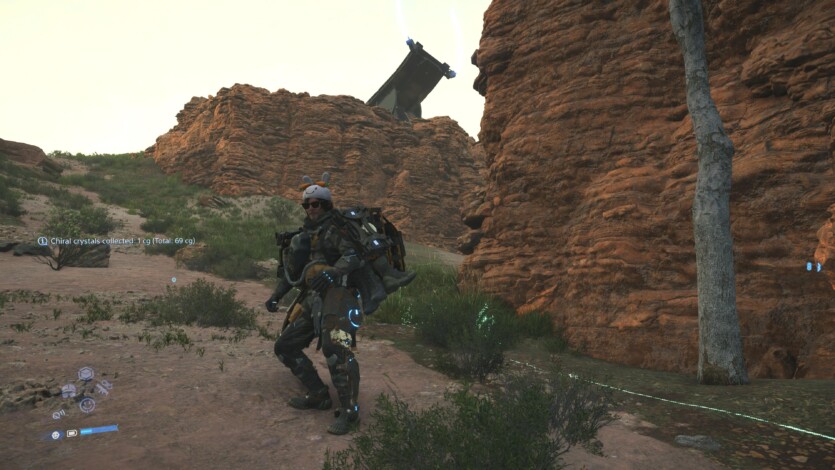

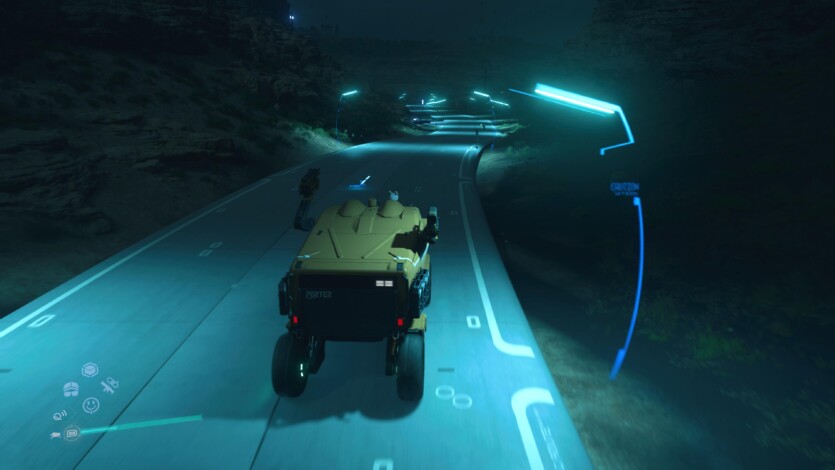
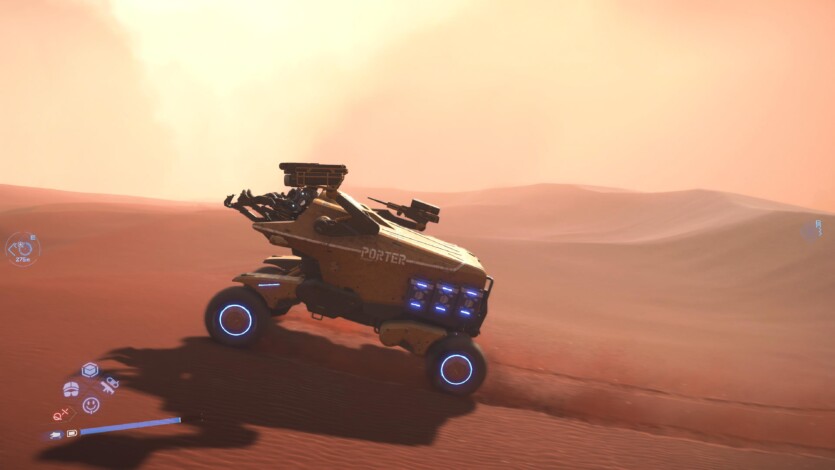
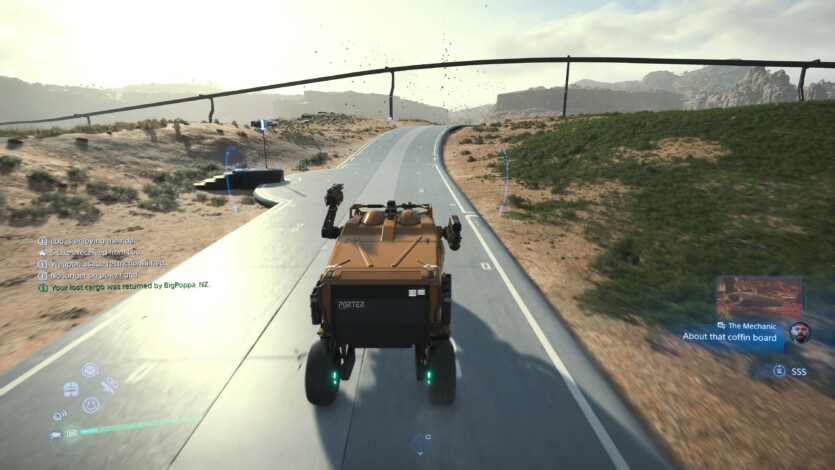

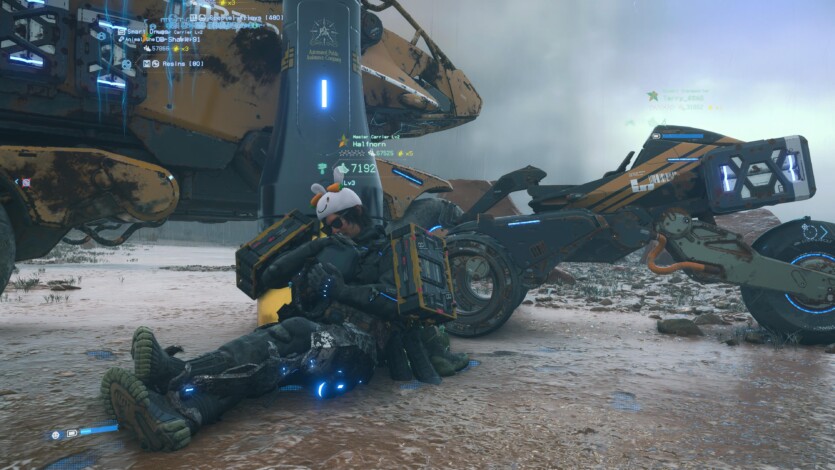
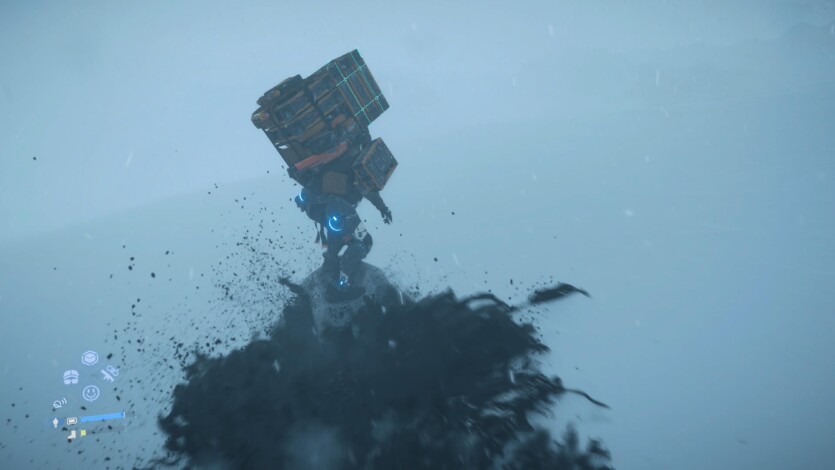
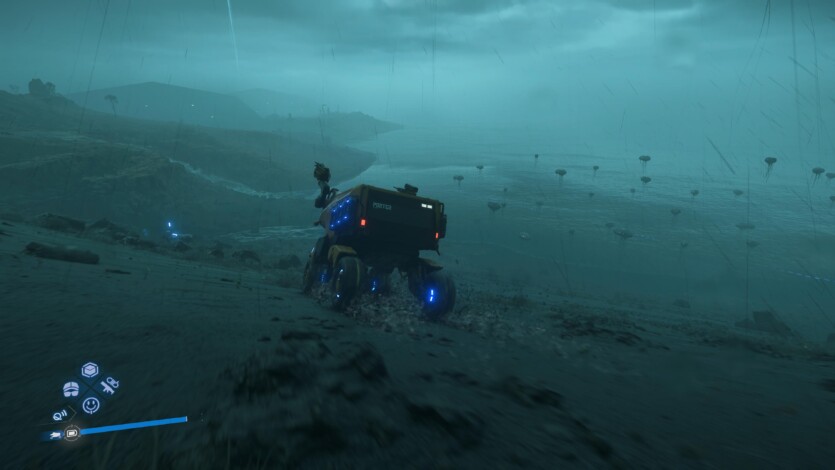
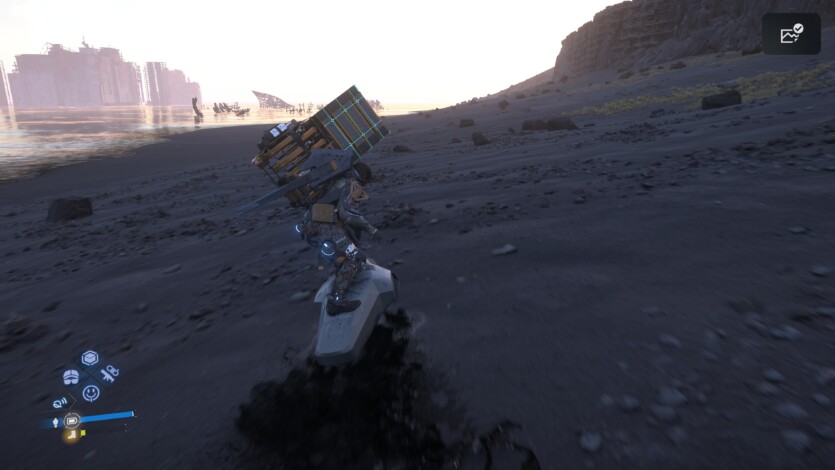
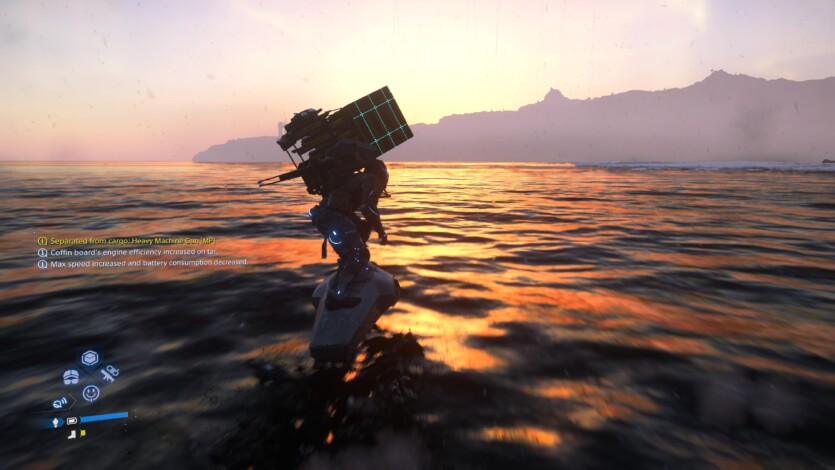
Social stranding in Death Stranding 2: On the Beach
Many reviewers have called the Social Strands system perhaps the most important achievement of the original Death Stranding. Asynchronous multiplayer, which allows players to help each other, fits the narrative of the rope really well, as a tool for rapprochement.
In Death Stranding 2, this system remained unchanged. And, in my opinion, this is actually the weakest part in both games. The thing is, doing good in a dead and scary world is easy and enjoyable. And this is the biggest problem that prevents Social Spinning from becoming a truly unique and revolutionary game system.
Of course, the Internet will soon be flooded with myriads of reviewers who feel like real altruists. I confess that getting likes is like getting points «a good boy» I was really pleased. But, as always, the devil is in the details — there is no dilemma in the game because good deeds do not conflict with self-interest.
As long as I had the resources and the infrastructure elements were on the way — I did build roads, guns, shelters, and monorails. However, as soon as some infrastructure element required even a little effort, I just poured what I had into it and drove on. And let someone else deal with it.
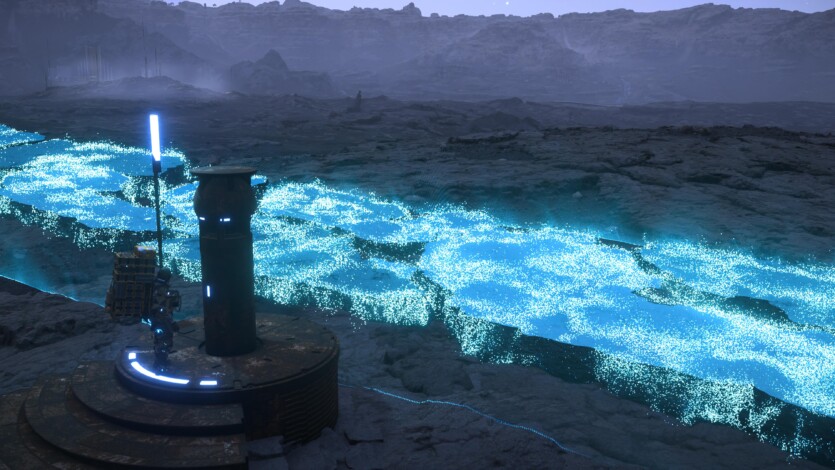
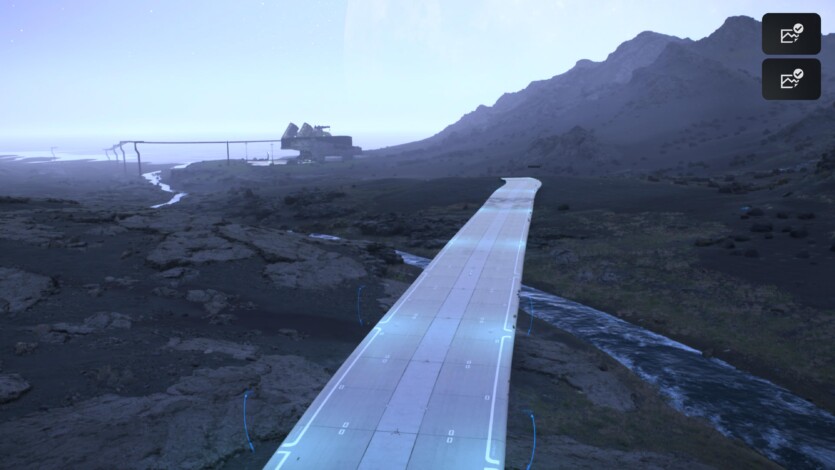
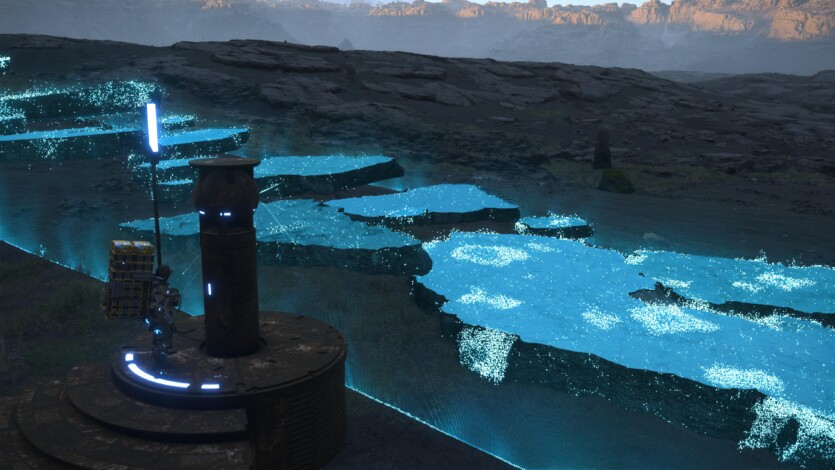
It’s the same with ladders and other tools. As a player, I can’t pick up a ladder to use it later. So is leaving it in a place where it will be convenient for other players a really good thing, or just a game convention?
Moreover, there were so many buildings, hiding places, and ladders in my world that absolutely minimal effort was enough to develop the infrastructure. So no, the game didn’t make me feel altruistic. Rather, I was simply taking advantage of the work of others.
Combat system Death Stranding 2: On the Beach
Let’s start the conversation with a huge elephant spy with a bandana in the room. Despite the fact that the marketing around the game strongly hints at it, Death Stranding 2 is not Metal Gear 6Yes, the developers assure us that this time the gameplay will be based on three pillars: movement, action, and stealth. Yes, from the very first delivery we will have weapons and a camp of bad guys ahead of us. Yes, this time Sam very quickly gets access to pistols, machine guns, shotguns, sniper rifles, swords, spears, rocket launchers, grenade launchers, boomerangs, drones, and countless traps and grenades.
However, despite the fact that the number and variety of enemies, a large arsenal, and the banal and obvious symbolism of the need for a stick and a rope are the main threads running through the game. Action and stealth are only auxiliary mechanics.
- The game’s shooting mechanics have not undergone any changes from the first part, i.e. they remain the same
- The enemies’ AI is sometimes simply absent, and their cones of vision are so small. Most of the time the player will feel like an untrained and brutal Solid Snake — and not even a tough, but without any fighting skills Sam Porter Bridges — but a child in a beach shooting range on the coast in Odesa.
- The gap between Sam’s hitpoints and the enemies’ is so large that you can safely go ahead and playfully withstand a hail of machine gun fire, destroying any resistance along the way. The worst thing that can happen is losing your balance because you’ll have to wait forever for Sam to finish the animation of getting back to your feet.
- Technically, there are seven bosses in the game. But mechanically, there are only two. And no matter how many there were, the combat system was clearly not the real focus. The bosses don’t act as obstacles, and the fights with them don’t add any complexity.
- Most of the tools, weapons, and armor have only niche benefits. Given the general simplicity and straightforwardness of most fights, players will simply ignore them because carrying extra weight in Death Stranding 2 is a so-so idea, to put it mildly.
- For the above reasons, stealth is not a necessity. Typically, I didn’t even consider it as an option because the difficulty of the enemies tends to zero throughout the game. So why waste time? Moreover, even seemingly standard and polished over time stealth mechanics were more annoying than useful.

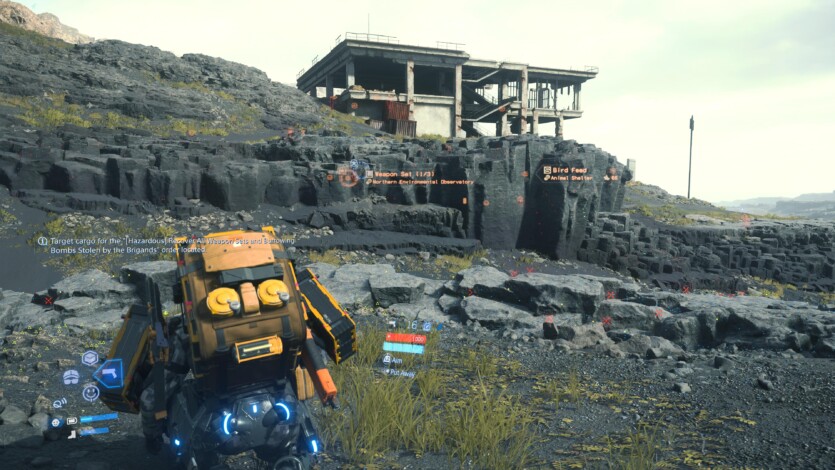
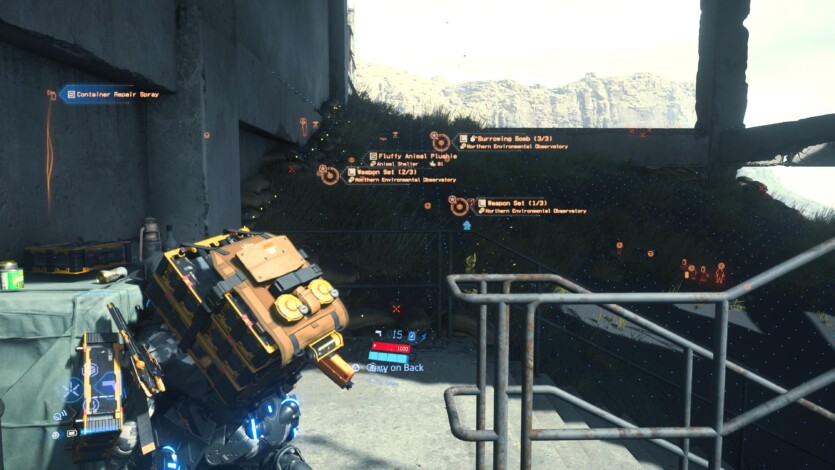

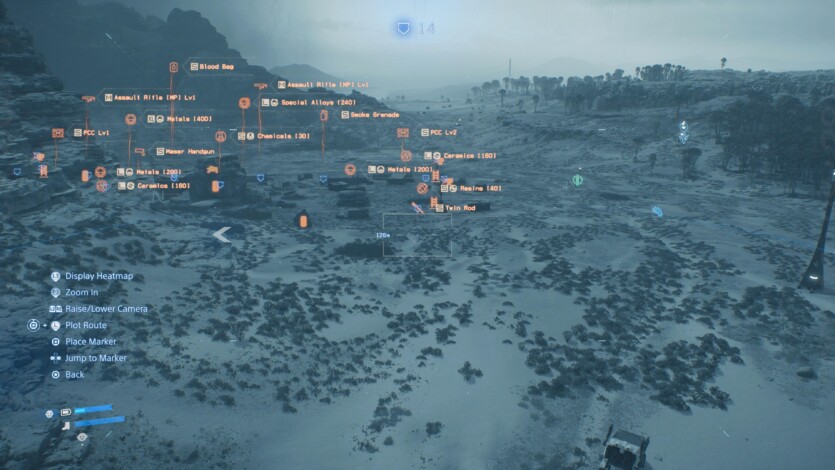
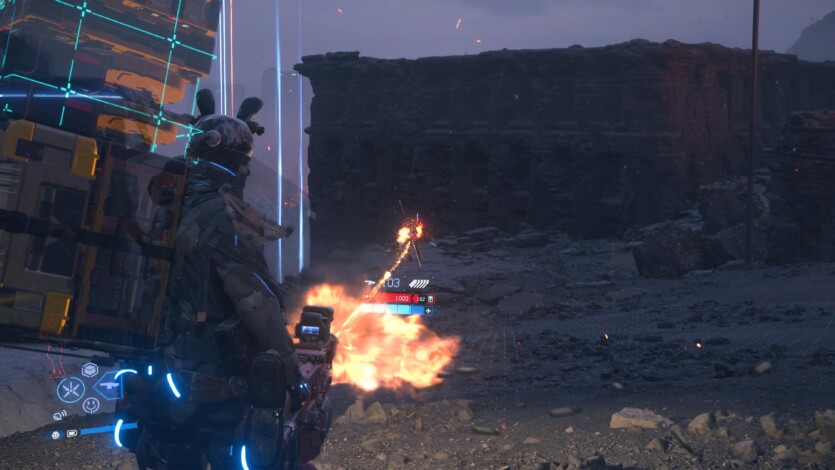
Want an example? The mechanics of scanning and marking enemies. I’m just scared to press the left bumper in the middle of a camp of radicalized idiots. Of course, the enemies will be highlighted with a tiny blue shield. And along with them, every box with weapons or resources is highlighted with giant orange letters, and the ground is covered with blue dots and red crosses. Under such conditions, it becomes difficult not only to fight, but to look at your feet.
Skyrim has an unacceptable storyline for an RPG and completely lame leveling mechanics. Nevertheless, we play it because Bethesda has created a unique sandbox that is interesting to exploreI doubt that anyone has played Fallout: New Vegas to enjoy the gameplay because this game is designed to play your character’s adventures in a brutal, post-apocalyptic world. Doom’s story is a bit of a bummer, but what the hell does it matter when you can tear and smash cyber demons with epic weapons? Ubisoft’s worlds are filled with markers and outposts, but we don’t play their games to have fun and have a good time, we play them to spend money in the in-game store.
What’s my point? It’s easy to look at specific elements and mechanics of a game as a spherical horse in a vacuum. I want to know if the shortcomings I listed make games worse Yes and no. On the one hand, if they were at least up to the level of Metal Gear V, the game would have avoided the lion’s share of the criticism that will soon be heaped upon it.
On the other hand, this approach would contradict Kojima’s vision. A game where the key aspect is the rope would have turned into another stick action game and, as a complete work of art, would have lost much more than it gained. Of course, from a purely technical perspective, Death Stranding 2: On the Beach would be a better game. But does anyone really need it?
Boss fights could have been made more challenging and tense. But this would have forced the player to focus on combat mechanics, take care of their own resources, and monitor their health, stamina, and Lu’s. But this would not allow you to enjoy the cold, mystical beauty and unbridled pathos during the fight itself, not just in the rendered cutscene
Yes, atmosphere is a key part of Sam and Lou’s journey. It manifests itself not only in the plot, dialogues, and cutscenes. It is part of the gameplayEach boss fight is an audiovisual catharsis: at times stunning, dizzying, and epic, and often sad and tragic, bringing me back to what seems like 2015 — a time when my brain simply couldn’t comprehend why defeating Sif in Dark Souls literally makes me feel anything other than «Cool, I won!»
Death Stranding 2: On the Beach graphics
Graphics are an important component of Kojima’s hyperrealism. In Death Stranding 2: On the Beach, this is better than ever. The picture and soundtrack literally immerse you in the game from the first seconds.
To be honest, the introduction to Sam and Lou’s second journey was perhaps the most stunning opening to a game I’ve ever seen. Ever. I guarantee you’ll be sweeping the floor with your jaw during every delivery, fight, or cutscene. And that’s all on a basic PS5.
The game has two graphics modes: Fidelity and Performace. The first one gives the juiciest picture, limiting the player to 30 frames. The second holds 60 like a flint. The difference between the modes is quite minimal. After several hours of testing, I could only see a difference in the number of stones and vegetation. There were no upscaling artifacts at all, either in the world as a whole or on long objects or hair, so feel free to turn on Performace mode.
The resemblance of the actors, facial expressions, facial, hair, movement, and clothing animations deserve a separate medal. Visually, this game looks more like a movie than a set of high-quality assets in a frame
Don’t get me wrong. I can and should sing the praises of the visuals in Death Stranding 2 for a long time, but Kojima Productions achieved this result solely due to art design and direction, not some breakthrough in graphics. The latter is simply not present in the game.


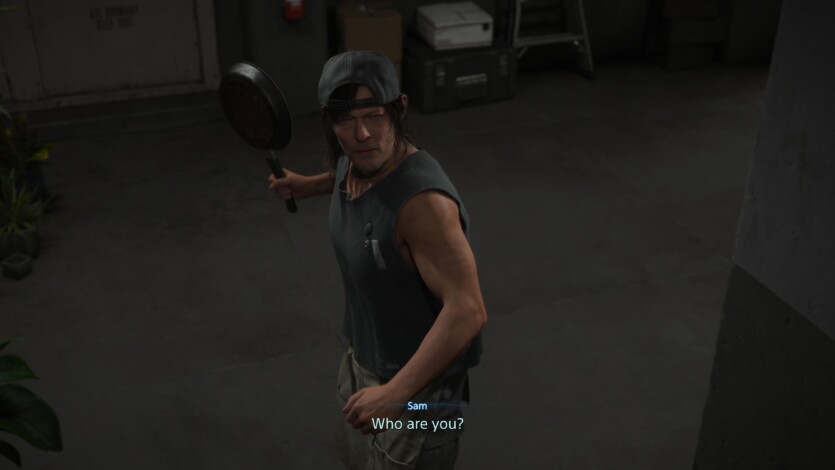
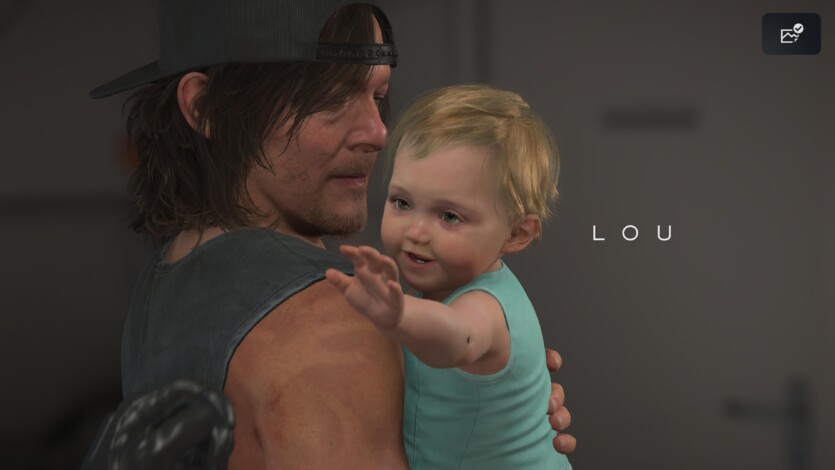
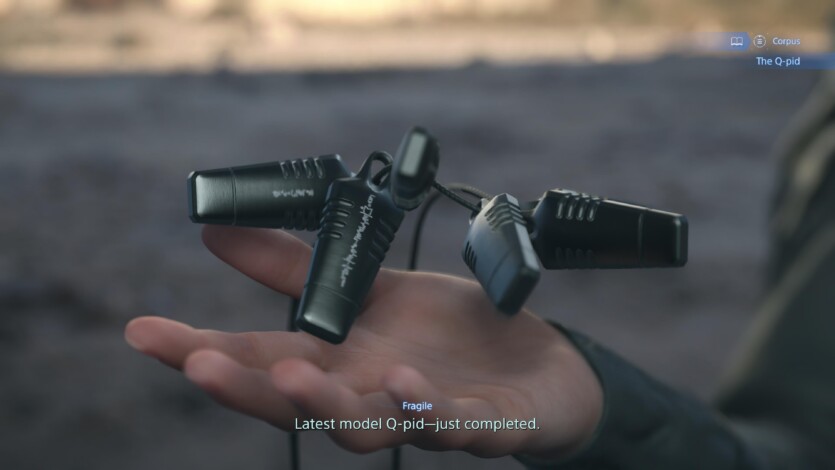
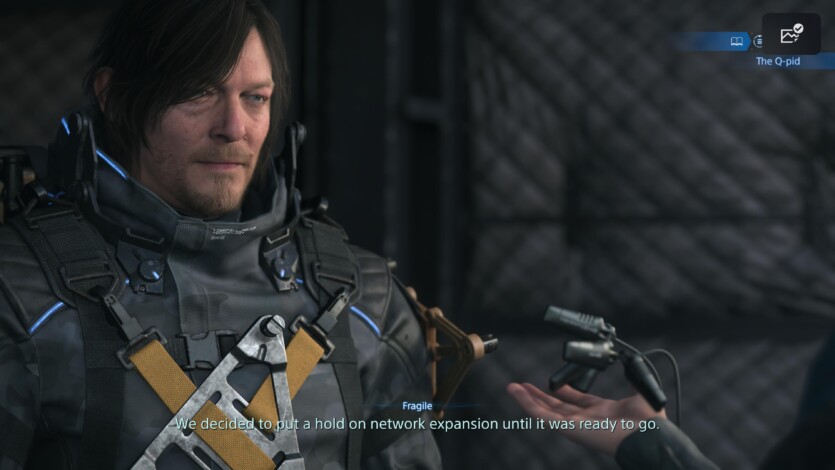
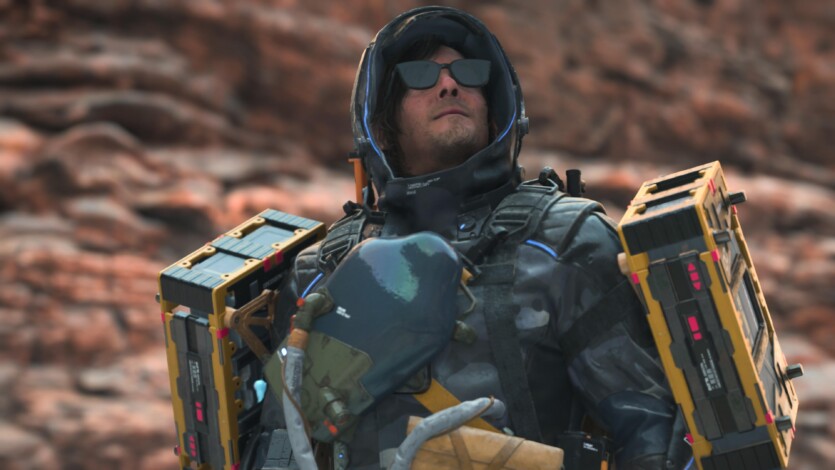
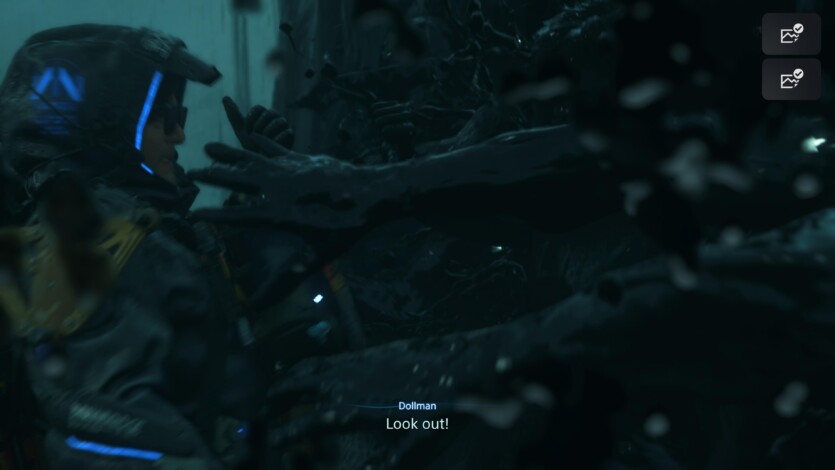

Form prevails over content
In a sense, Death Stranding 2 is the culmination of blind faith in one’s own vision. Yes, the marketing materials will assure us that the player will have more freedom, that the different approaches to delivery are equivalent and balanced, and that the player will experience more action and drive. But in reality, those mechanics that expand the gameplay loop are only superficial.
Of course, the player will have more opportunities to shoot from a significantly expanded arsenal. But the combat mechanics were the weakest part of the original and remained so in the sequel. And the superficial stealth mechanics are more annoying than entertaining.
But the magic of the original remains unchanged. The exciting and mysterious world is just as interesting to explore as it was in 2019. The hyperrealism of the story and characters still captivates the player like a flame. The game aptly pokes fun at itself, and at games in general, thanks to its vivid meta-irony.
However, the most striking aspect of both the original and the sequel is the realization of one’s own insignificance. The player also feels like a small ant in the midst of the dizzying majesty of primitive nature.
And the game itself knows that it is just a game. It is not interested in being an object. It doesn’t aim to show, teach, tell, or even entertain. Death Stranding 2 exists solely for the sake of the player, and Kojima’s goal is to direct our thoughts not to the 4K TV, but to the middle of our subconscious.
PS: Я забрав в гри 1 бал виключно за відсутність української локалізації за наявності російської. Якби не ця прикра деталь, то Death Stranding 2: On the Beach стала б для мене ігровим досвідом на 10 із 10.

Spelling error report
The following text will be sent to our editors: